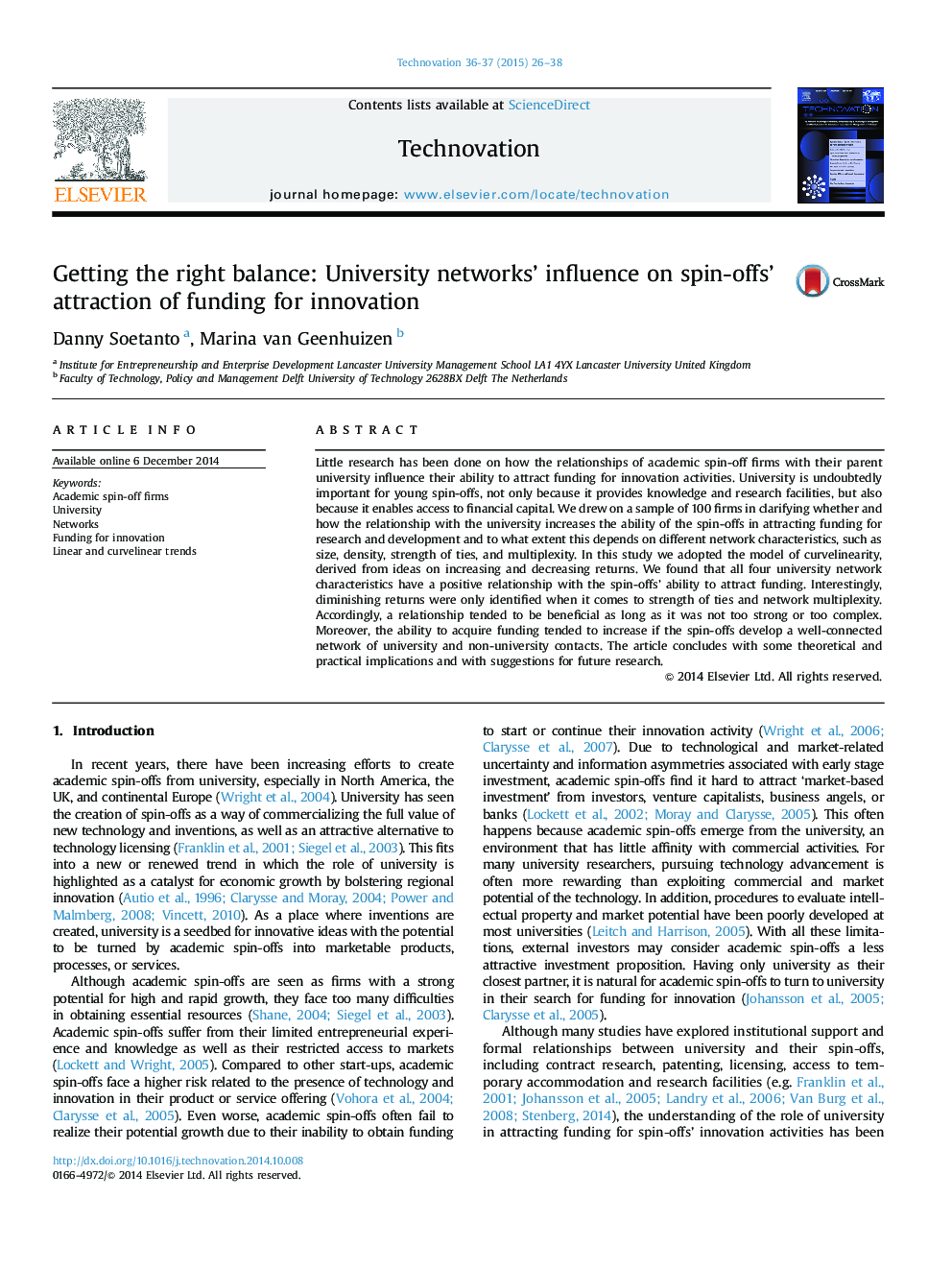| Article ID | Journal | Published Year | Pages | File Type |
|---|---|---|---|---|
| 1021839 | Technovation | 2015 | 13 Pages |
•The study aims to explore the characteristics of ties between spin-offs and university and the impact of these ties on spin-offs’ capability in attracting funding for innovation activity.•We hypothesized that the relationship between network characteristics and spin-offs’ capability in attracting funding for research and development represent a linear and curvilinear function.•The study draws on a 100 face-to-face interview with university spin-offs from two technical universities, TU Delft (Delft, the Netherlands) and NTNU Norwegian University of Science and Technology (Trondheim, Norway). The network data consists of two types of networks, university-based contacts, and non-university-based contacts.•We found clear signs for curvilinear relationship with regards to strength of ties and network multiplexity. Curvilinear relationship could not be found for the impact of network density (linear relation). However, we found that a well-connected network of university and non-university contacts help spin-offs in acquiring funding for innovation.•Network linkages with the parent organization apparently have effects on innovation and this requires a conscious management of these linkages by spin-offs in terms of maintaining or ceasing existing linkages and establishing new ones, and in increasing/decreasing strength. Accordingly, awareness needs to be increased about different impacts of university linkages, particularly the trend for detrimental effects if the network relations get too strong or too complex.
Little research has been done on how the relationships of academic spin-off firms with their parent university influence their ability to attract funding for innovation activities. University is undoubtedly important for young spin-offs, not only because it provides knowledge and research facilities, but also because it enables access to financial capital. We drew on a sample of 100 firms in clarifying whether and how the relationship with the university increases the ability of the spin-offs in attracting funding for research and development and to what extent this depends on different network characteristics, such as size, density, strength of ties, and multiplexity. In this study we adopted the model of curvelinearity, derived from ideas on increasing and decreasing returns. We found that all four university network characteristics have a positive relationship with the spin-offs’ ability to attract funding. Interestingly, diminishing returns were only identified when it comes to strength of ties and network multiplexity. Accordingly, a relationship tended to be beneficial as long as it was not too strong or too complex. Moreover, the ability to acquire funding tended to increase if the spin-offs develop a well-connected network of university and non-university contacts. The article concludes with some theoretical and practical implications and with suggestions for future research.
